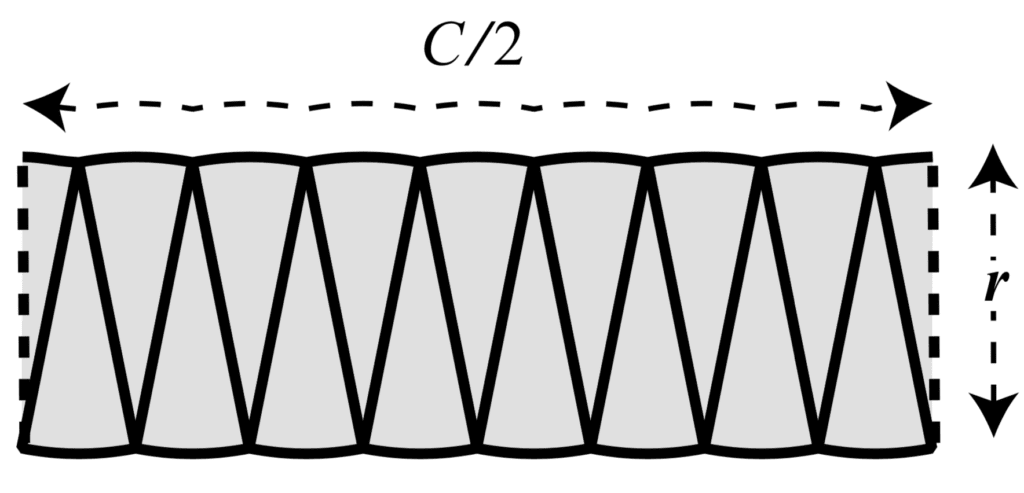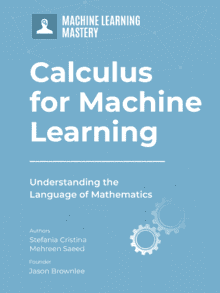Calculus is the mathematical study of change.
The effectiveness of calculus to solve a complicated but continuous problem lies in its ability to slice the problem into infinitely simpler parts, solve them separately, and subsequently rebuild them into the original whole. This strategy can be applied to study all continuous elements that can be sliced in this manner, be it the curvatures of geometric shapes, as well as the trajectory of an object in flight, or a time interval.
In this tutorial, you will discover the origins of calculus and its applications.
After completing this tutorial, you will know:
- What is calculus?
- How can calculus be applied to the real-world?
Let’s get started.

What is Calculus?
Photo by Stephen Lammens, some rights reserved.
Tutorial Overview
This tutorial is divided into two parts; they are:
- Calculus
- Applications of Calculus
Calculus
Calculus is a Latin word for stone, or pebble.
The use of this word has seeped into mathematics from the ancient practice of using little stones to perform calculations, such as addition and multiplication. While the use of this word has, with time, disappeared from the title of many methods of calculation, one important branch of mathematics retained it so much that we now refer to it as The Calculus.
Calculus, like other forms of mathematics, is much more than a language; it’s also an incredibly powerful system of reasoning.
– Page xii, Infinite Powers, 2019.
Calculus matured from geometry.
At the start, geometry was concerned with straight lines, planes and angles, reflecting its utilitarian origins in the construction of ramps and pyramids, among other uses. Nonetheless, geometers found themselves tool-less for the study of circles, spheres, cylinders and cones. The surface areas and volumes of these curved shapes was found to be much more difficult to analyse than rectilinear shapes made of straight lines and flat planes. Despite its reputation for being complicated, the method of calculus grew out of a quest for simplicity, by breaking down complicated problems into simpler parts.
Back around 250 BCE in ancient Greece, it was a hot little mathematical startup devoted to the mystery of curves.
– Page 3, Infinite Powers, 2019.
In order to do so, calculus revolved around the controlled use of infinity as the bridge between the curved and the straight.
The Infinity Principle
To shed light on any continuous shape, object, motion, process, or phenomenon — no matter how wild and complicated it may appear—reimagine it as an infinite series of simpler parts, analyze those, and then add the results back together to make sense of the original whole.
– Page xvi, Infinite Powers, 2019.
To grasp this concept a little better, imagine yourself travelling on a spaceship to the moon. As you glance outwards to the moon from earth, its outline looks undoubtedly curved. But as you approach closer and smaller parts of the outline start filling up the viewing port, the curvature eases and becomes less defined. Eventually, the amount of curvature becomes so small that the infinitesimally small parts of the outline appear as a straight line. If we had to slice the circular shape of the moon along these infinitesimally small parts of its outline, and then arrange the infinitely small slices into a rectangle, then we would be able to calculate its area: by multiplying its width to its height.
This is the essence of calculus: the breakthrough that if one looks at a curved shape through a microscope, the portion of its curvature being zoomed upon will appear straight and flat. Hence, analysing a curved shape is, in principle, made possible by putting together its many straight pieces.
Calculus can, therefore, be considered to comprise of two phases: cutting and rebuilding.
In mathematical terms, the cutting process always involves infinitely fine subtraction, which is used to quantify the differences between the parts. Accordingly, this half of the subject is called differential calculus. The reassembly process always involves infinite addition, which integrates the parts back into the original whole. This half of the subject is called integral calculus.
– Page xv, Infinite Powers, 2019.
With this in mind, let us revisit our simple example.
Suppose that we have sliced the circular shape of the moon into smaller pieces, and rearranged the pieces alongside one another.
The shape that we have formed is similar to a rectangle having a width equal to half the circle circumference, C/2, and a height equal to the circle radius, r.
To flatten out the curvature further, we can slice the circle into thinner pieces.
The thinner the slices, the more the curvature flattens out until we reach the limit of infinitely many slices, where the shape is now perfectly rectangular.
We have cut out the slices from the circular shape, and rearranging them into a rectangle does not change their area. Hence, calculating the area of the circle is equivalent to calculating the area of the resulting rectangle: A = rC/2.
Curves are not only a characteristic of geometric shapes, but also appear in nature in the form of parabolic arcs traced by projectiles, or the elliptical orbits of planets around the sun.
And so began the second great obsession: a fascination with the mysteries of motion on Earth and in the solar system.
– Page xix, Infinite Powers, 2019.
And with curves and motion, the next natural question concerns their rate of change.
With the mysteries of curves and motion now settled, calculus moved on to its third lifelong obsession: the mystery of change.
– Page xxii, Infinite Powers, 2019.
It is through the application of the Infinity Principle that calculus allows us to study motion and change too, by approximating these into many infinitesimal steps.
It is for this reason that calculus has come to be considered the language of the universe.
Applications of Calculus
Calculus has been applied in many domains, from Newton’s application in solving problems of mathematical physics, to the more recent application of Newton’s ideas in the work done at NASA by mathematician, Katherine Johnson, and her colleagues.
In the 1860s, James Clerk Maxwell used calculus to recast the experimental laws of electricity and magnetism, eventually predicting not only the existence of electromagnetic waves, but also revealing the nature of light as an electromagnetic wave. Based on his work, Nikola Tesla created the first radio communication system, Guglielmo Marconi transmitted the first wireless messages, and eventually many modern-day devices, such as the television and the smartphone, came into existence.
Albert Einstein, in 1917, also applied calculus to a model of atomic transitions, in order to predict the effect of stimulated emission. His work later led to the first working lasers in the 1960s, which have since then been used in many different devices, such as compact-disc players and barcode scanners.
Without calculus, we wouldn’t have cell phones, computers, or microwave ovens. We wouldn’t have radio. Or television. Or ultrasound for expectant mothers, or GPS for lost travelers. We wouldn’t have split the atom, unraveled the human genome, or put astronauts on the moon. We might not even have the Declaration of Independence.
– Page vii, Infinite Powers, 2019.
More interestingly is the integral role of calculus in machine learning. It underlies important algorithms, such as gradient descent, which requires the computation of the gradient of a function and is often essential to train machine learning models. This makes calculus one of the fundamental mathematical tools in machine learning.
Further Reading
This section provides more resources on the topic if you are looking to go deeper.
Books
- Infinite Powers, 2020.
- Calculus Essentials for Dummies, 2019.
- Calculus for Dummies, 2016.
- The Hitchhiker’s Guide to Calculus, 2019.
- Mathematics for Machine Learning, 2020.
Articles
Summary
In this tutorial, you discovered the origins of calculus and its applications.
Specifically, you learned:
- That calculus is the mathematical study of change that is based on a cutting and rebuilding strategy.
- That calculus has permitted many discoveries and the creation of many modern-day devices as we known them, and is also a fundamental mathematical tool in machine learning.
Do you have any questions?
Ask your questions in the comments below and I will do my best to answer.











I have always had a fascination for Calculus. Thanks for the wonderful explanation Stefania.
You’re welcome!
How did calculus give us the Declaration of Independence?
From memory, I think it was a Ben Frankin reference. You might need to read the book.
The book mentions this again on pg. 239.
Great Article, Thanks Stefania
Nice description of calculus and about its applications and resulted contributions in our daily lives.
You’re welcome!
How significantly calculus is contributing in our daily lives?
Hi Abdul…the following may be of interest to you:
https://allusesof.com/math/51-amazing-uses-of-calculus-in-real-life/